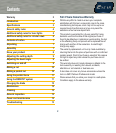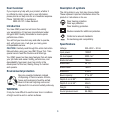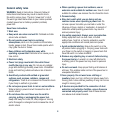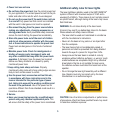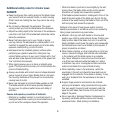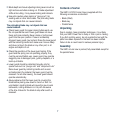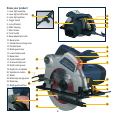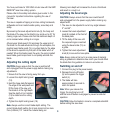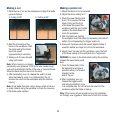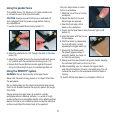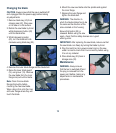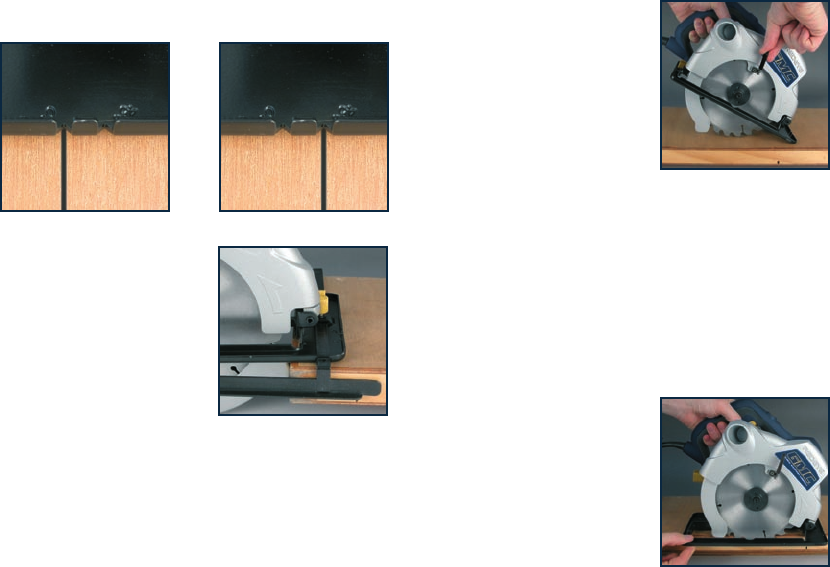
10
Making a cut
1. Mark the line of cut on the workpiece and align the blade
guide as follows:
a. Cutting at 90° b. Cutting at 45°
2. Rest the front edge of the
base on the workpiece. Start
the motor and let the blade
reach full speed
(approximately 2 seconds).
3. Slowly push the saw forward
using both hands.
Note. When making a cut always
use steady, even pressure. Forcing the saw causes rough
cuts and could shorten the life of the saw or cause kickback.
Allow the blade and the saw to do the work.
4. After completing your cut, release the switch (4) and
allow the blade to come to a complete stop. Do not
remove the saw from the workpiece while the blade is
moving.
Note. Since blade thickness varies, always make a trial cut
in scrap material along the guideline to check the accuracy
of the blade guide notches.
Making a pocket cut
1. Adjust the depth of cut as required.
2. Adjust the bevel setting to 0°.
3. Raise the lower blade guard
lever (13) to expose the saw
blade, firmly rest the front
of the base flat against the
workpiece with the rear handle
raised so the blade does not
touch the workpiece.
4. With the blade just clearing
the workpiece, start the motor by depressing the lock-off
button (5) and squeezing the trigger switch (4).
5. Always let the blade reach full speed (approximately 2
seconds) before you begin to cut into the workpiece.
6. Slowly lower the saw into the workpiece, using the front
of the base resting on the workpiece as a hinge point.
WARNING. As soon as the blade starts cutting the material,
release the lower blade guard
lever.
7. Once the base plate (15) is
flat against the workpiece,
proceed cutting in a forward
direction to the
end of the cut.
8. After completing your cut,
release the trigger switch
and allow the blade to come
to a complete stop. Do not remove the saw from the
workpiece while the blade is moving.
Note. If the corners of your pocket cut are not completely
cut through, use a jigsaw or hand saw to finish the corners.




